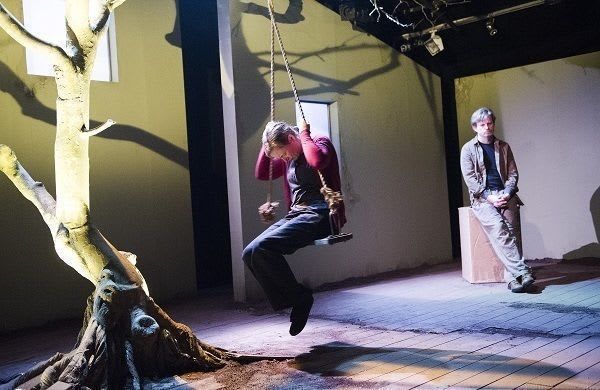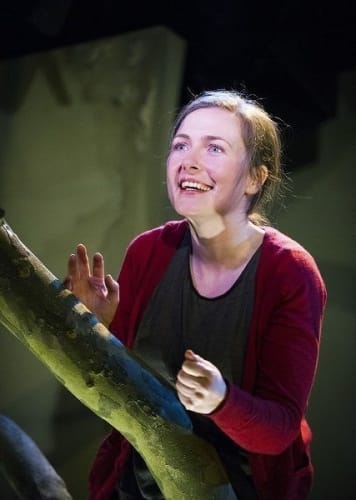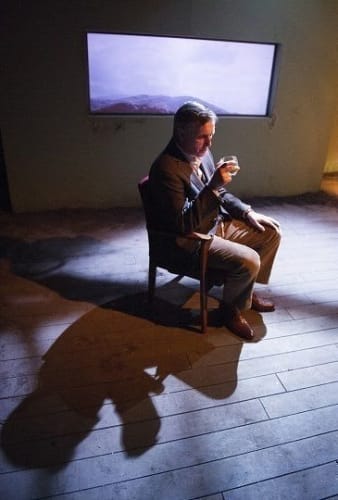Though written 15 years later in 1994, Molly Sweeney functions as a kind of companion to another Brian Friel piece, Faith Healer. Both feature trios of actors retailing monologues about the extraordinary experiences of one of their number.
Dorothy Duffy shines as Molly, a judge's daughter who was something of a daddy's girl for two reasons. Her mother suffered from nervous problems and was frequently away, while Molly herself was functionally blind from the age of 10 months.
We don't meet her for another 37 years, by which time she has learned how to live a fulfilled and highly enjoyable life, rarely better than when she enjoys a swim.
By this stage, she has married Ruari Conaghan's Frank, a chancer who lives off her wages as a physiotherapist. He has the gift of the gab and is a self-confessed enthusiast. In his case, this means a perennially unemployed gadabout with interest in everything but a butterfly's desire to flit from project to project without ever completing one.
He is the complete antithesis of the play's third character, an ophthalmologist played by Stuart Graham called Mr Rice. Though once a prodigy, he is now prey to whisky, possibly dating back to the time when his wife left him for a rival, taking their two daughters away.
Thus the trio are brought together in Friel's favourite Ballybeg in Donegal by Frank's latest project, which is the recovery of Molly's vision through the efforts of the eye doctor.
This process sheds light on all three, as their lives intertwine more and more. Molly emphasises her reluctance to become the subject of an experiment that has only previously succeeded on 20 occasions in 1,000 years.
This is Brian Friel rather than Walt Disney so the consequences avoid saccharin happiness. Molly's fears that her stable life will be destroyed are therefore, despite the success of the procedure, soon proved correct, possibly because her mind wills it.
This bittersweet outcome allows the writer to explore the fascinating subject of how the eye and brain interrelate. Seeing is two-fold, with vision of limited use to a brain that hasn't the experience to interpret the data that it receives.
Thus, Molly Sweeney becomes a fascinating play of morals and characters, written in poetic language that complements the plot.
The Signe Beckmann-designed set is suitably simple, as is some of the best theatre lighting of the year from Chahine Yavrohan. The set's centrepieces, a swing and a tree, both play their parts in the poignant drama that unfolds.
Under the subtle direction of Abigail Graham, all three performers act naturally, which is just what this play, with its poetry and symbolism, requires.
Molly Sweeney is a play that draws portraits of three contrasting people in great detail, delineating hopes and dreams through their own mouths and those of the other pair. This means that by the end of 2½ hours, you really do feel as if you know them. Achieving such a result requires a great talent and explains why Brian Friel is recognised as one of Ireland's greatest living playwrights.


